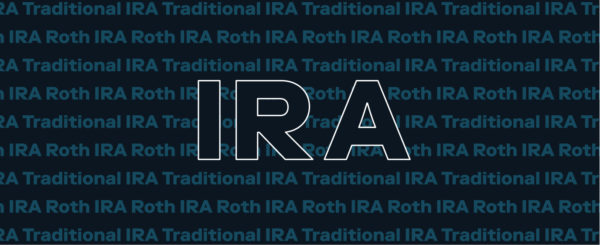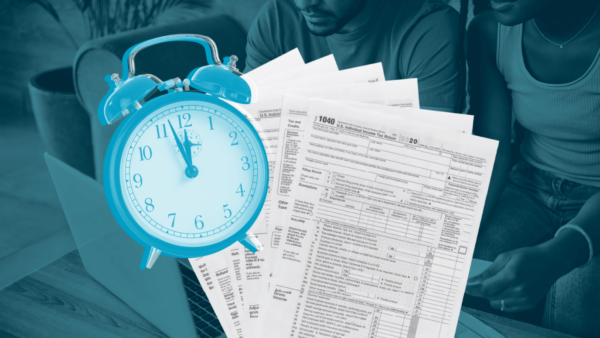Dec 5, 2023
Stash’s Tax Checklist: Things You Need to Know Before You File

It might seem like you just filed last year’s taxes, but it’s time to start thinking about filing your 2023 tax return.
The Internal Revenue Service (IRS) typically begins accepting tax returns for income earned in 2023 by the end of January 2024.
| Note: The last day to invest in 2023 is Friday, December 29th. |
The deadline to submit your tax return or apply for an extension is Monday, April 15, 2024. To help you prepare to file, Stash has created the following checklist to help make sure you’re informed for the upcoming filing season and that you have everything you need:
#1 Find out which forms you need and when to expect them
Before you start to file, know which forms you’ll need and make sure you have them. If you are, or were, fully employed by a company that withheld taxes from your paycheck in 2023, you should receive a W-2 based on the W-4 withholding information you filled out when you started. If you’re a freelancer or a contractor, you should receive a 1099 form. Companies are required to send out W-2s and 1099s to employees by January 31, 2024.
Keep in mind that you might have additional forms based on your situation. For example, if you withdrew from your retirement accounts, you might receive 1099-R. Or if you received dividends from investments or you have realized capital gains or losses from investments, you might get a 1099-DIV or a 1099-B. For more information on which forms you might receive if you invest with Stash and when go here.
#2 Figure out your tax bracket
Another important thing to know when you start assembling your paperwork is what tax bracket you’re in. Here are the tax brackets for individuals and married couples in 2023, adjusted for inflation:
2023 Federal Tax Rates, Unmarried Individuals:
| Income | Rate |
|---|---|
| Up to $11,000 | 10% |
| Over $11,000 to $44,725 | 12% |
| Over $44,725 to $95,375 | 22% |
| Over $95,375 to $182,100 | 24% |
| Over $182,100 to $231,250 | 32% |
| Over $231,250 to $578,125 | 35% |
| Anything over $578,125 | 37% |
2023 Federal Income Tax Rates, Married Filing Jointly:
| Income | Rate |
|---|---|
| Up to $22,000 | 10% |
| Over $22,000 to $89,450 | 12% |
| Over $89,450 to $190,750 | 22% |
| Over $190,750 to $364,200 | 24% |
| Over $364,200 to $462,500 | 32% |
| Over $462,500 to $693,750 | 35% |
| Anything over $693,750 | 37% |
#3 Gather any receipts you’ll need if you decide to itemize
For the 2023 tax year, the standard deduction for individuals is $13,850 and $27,700 for married couples. By taking the standard deduction, you can reduce your taxable income by that amount. But you might instead decide to itemize your deductions if you’re not permitted to take the standard deduction for some reason, or if your itemized deductions are likely to be worth more than the standard deduction.
You might itemize expenses such as property taxes, interest accrued on your mortgage, charitable contributions, work-related expenses, and more. If you decide to itemize your deductions, you’ll need to collect all of the receipts and documents to substantiate your expenses.
#4 Determine whether you’ll need to work with a tax professional
You’ll also need to decide how you plan to file your taxes. You might want to use an online service. Or if your taxes are more complicated this year because, for example, you lived in multiple states or worked a few different jobs, you might want to work with a tax professional.
Taxpayers who earned $73,000 or less in 2023 might qualify for the Free File Program from the IRS. Some tax preparation companies allow those taxpayers to file their federal, and in some cases state, taxes free of charge.
#5 Consider filing online, or apply for an extension
The IRS recommends filing your tax return online in order to expedite the process of receiving a refund if you do receive one. You might also consider setting up direct deposit with your return so your refund can be deposited into your account without you needing to wait for it to arrive by mail. You can set up Direct Deposit with Stash to get your refund routed to your Stash account.
And remember that if you need more time to file your return, you need to apply for an extension by April 15th. For more information, visit Stash’s tax center.

Up to 20% off TurboTax
Want to simplify tax season? Easily import your Stash tax documents into TurboTax. And here’s a bonus—TurboTax offers Stashers up to 20% off federal tax prep.

Promotion is not sponsored or endorsed by Stash, or any of their respective affiliates, and none of the foregoing has any responsibility to fulfill any funds earned through this promotion.
Related Articles

How Much Do I Need to Retire: A Guide for Retirement Saving [2024]

Roth vs. Traditional IRA: Which Is Best for You in 2024?

How To Plan for Retirement

Why It Can Pay to File Your Taxes Early

Your Stash and Taxes: The (Super) Basics

Tax Season Dates You Need to Know for 2024





